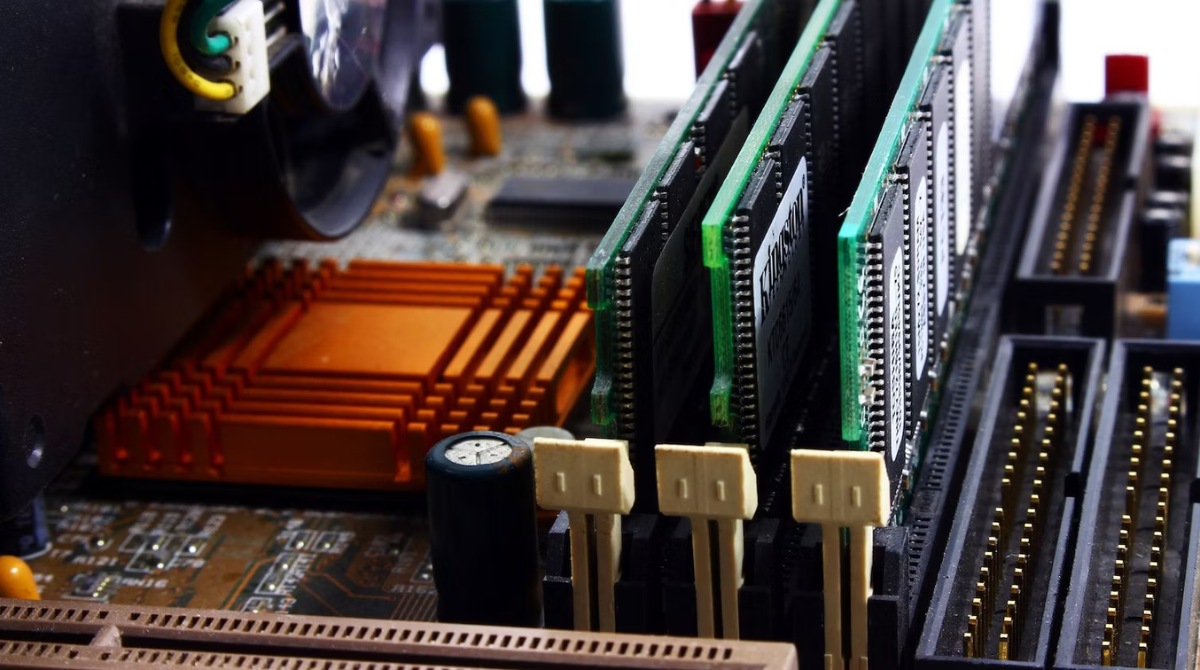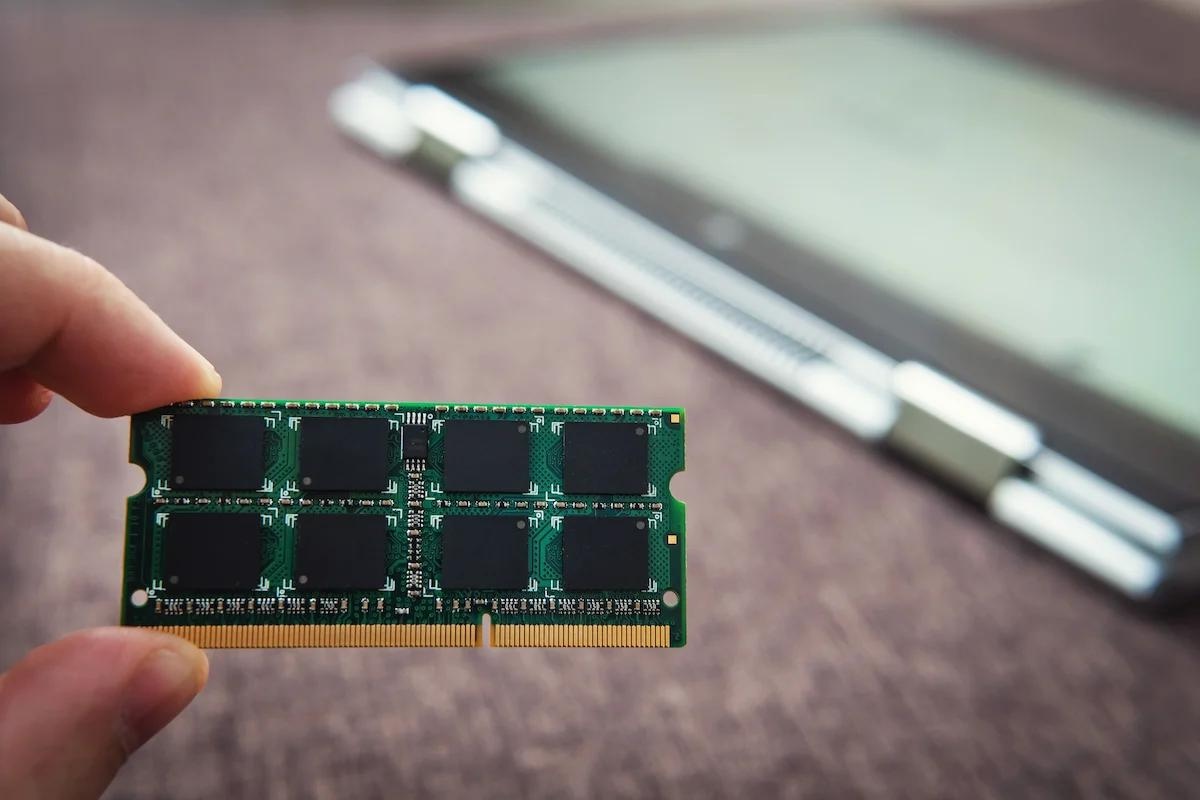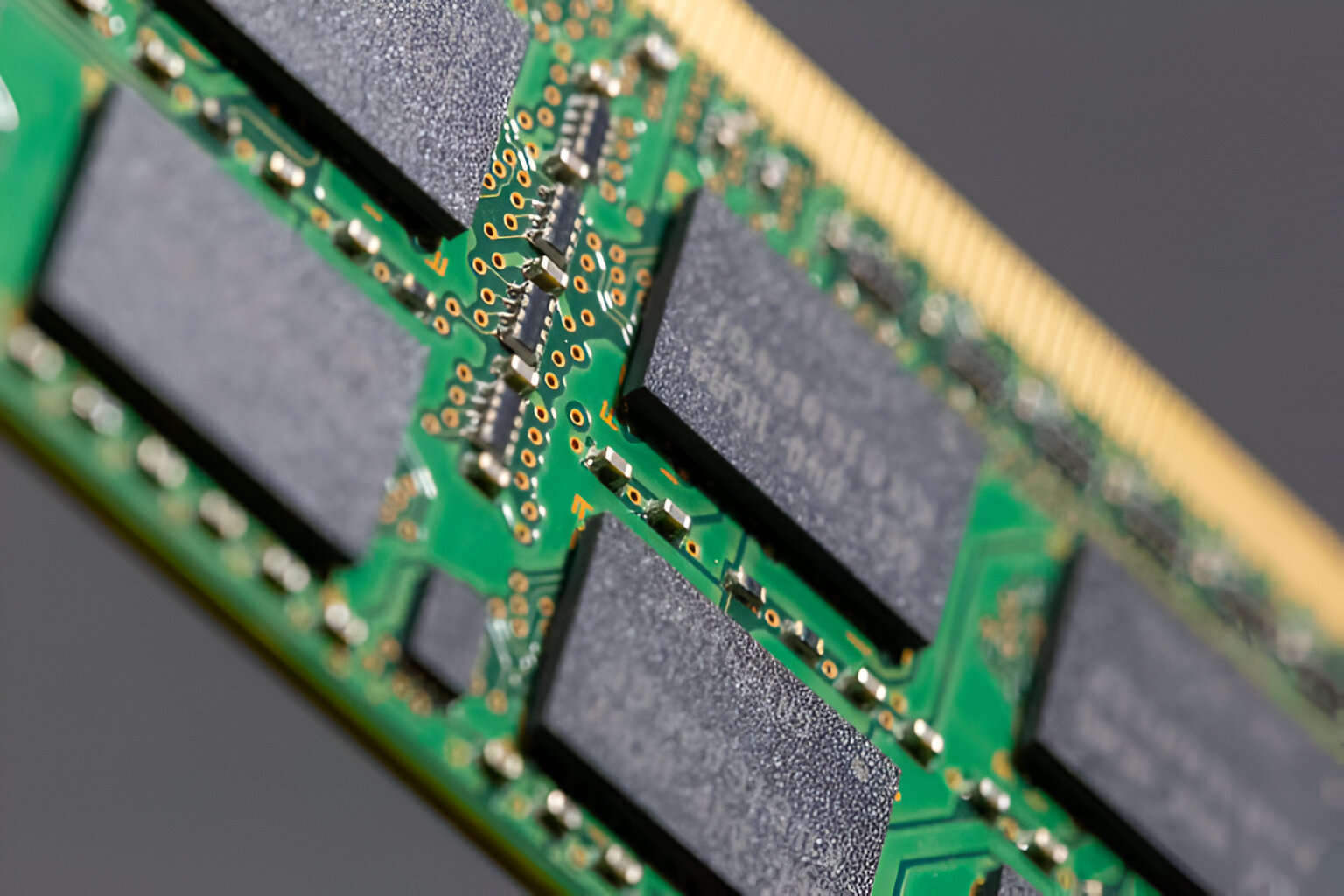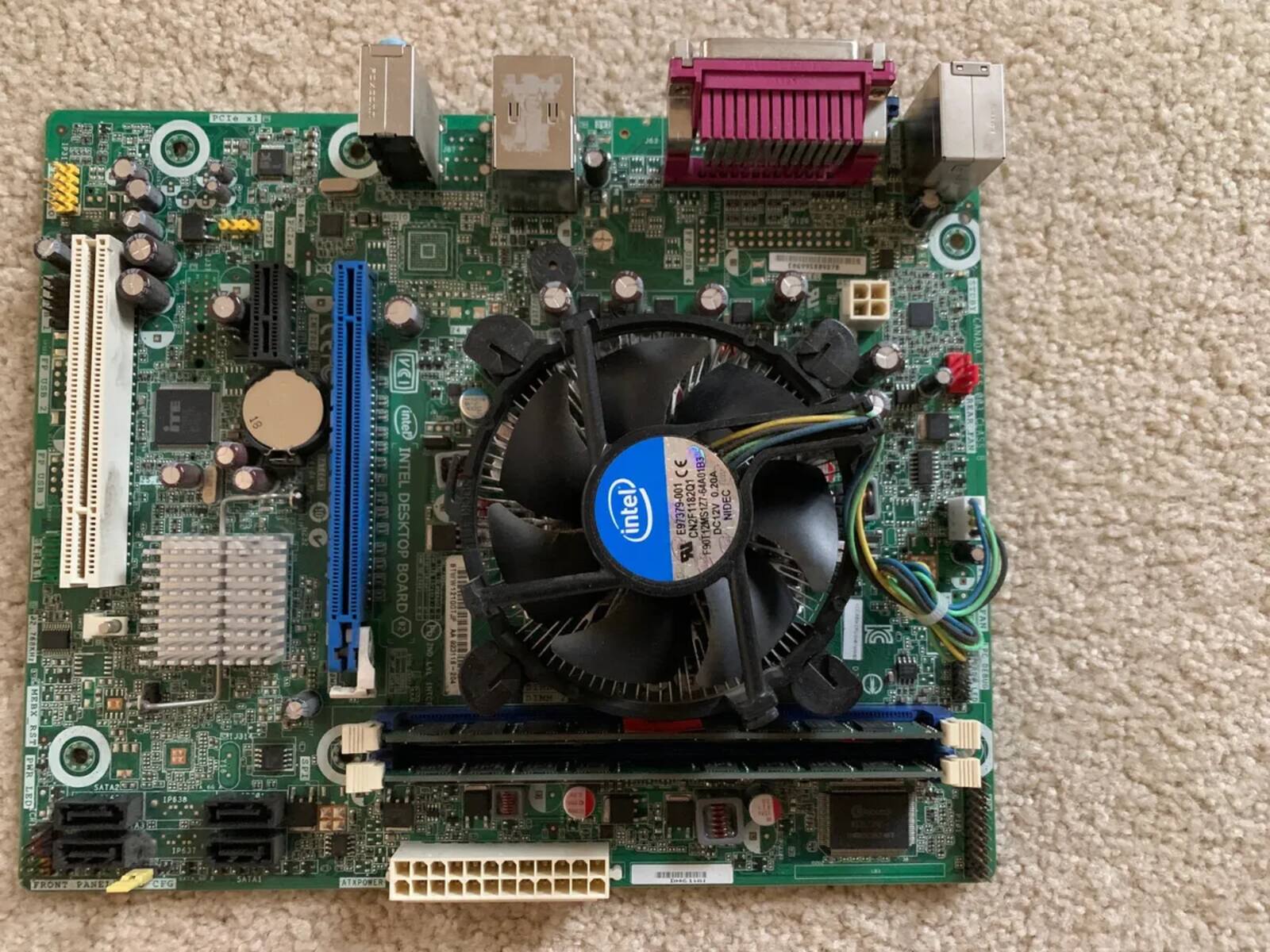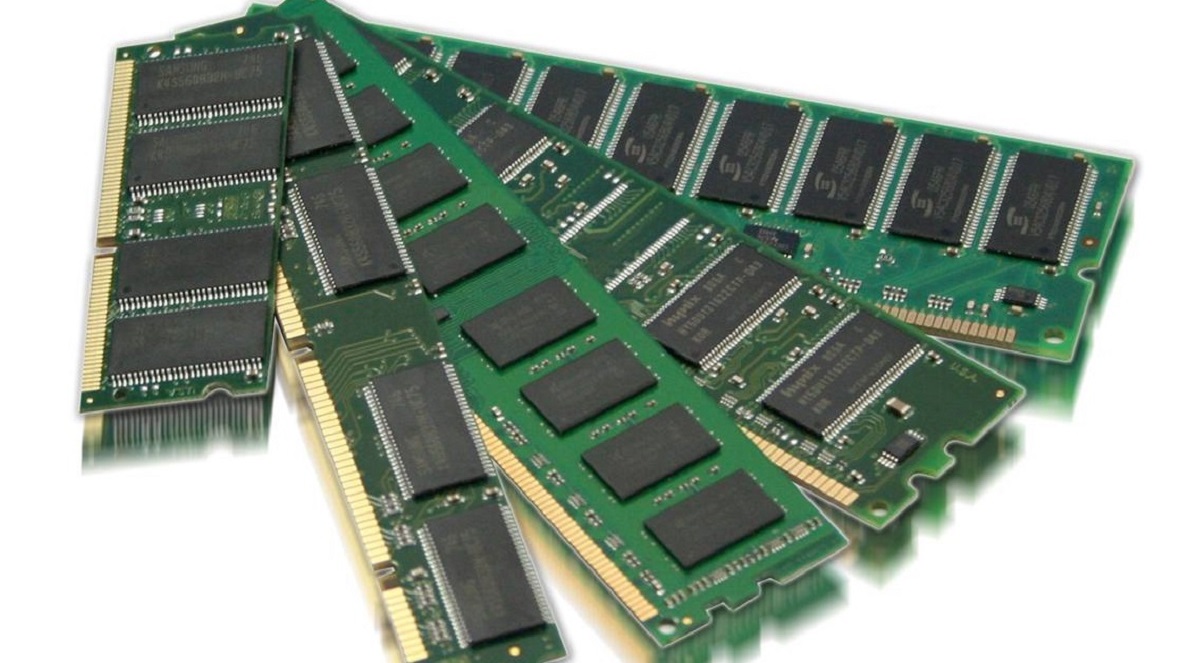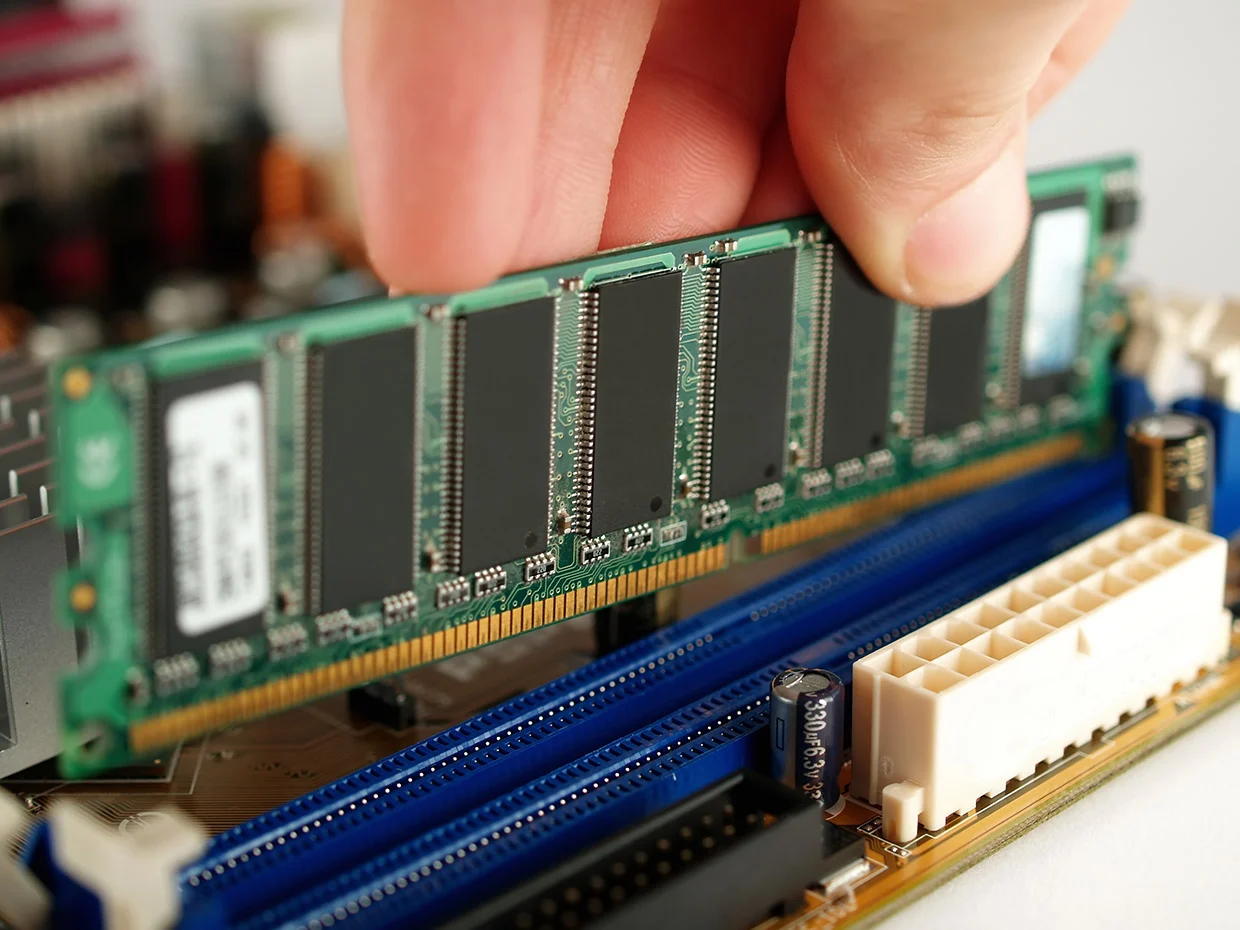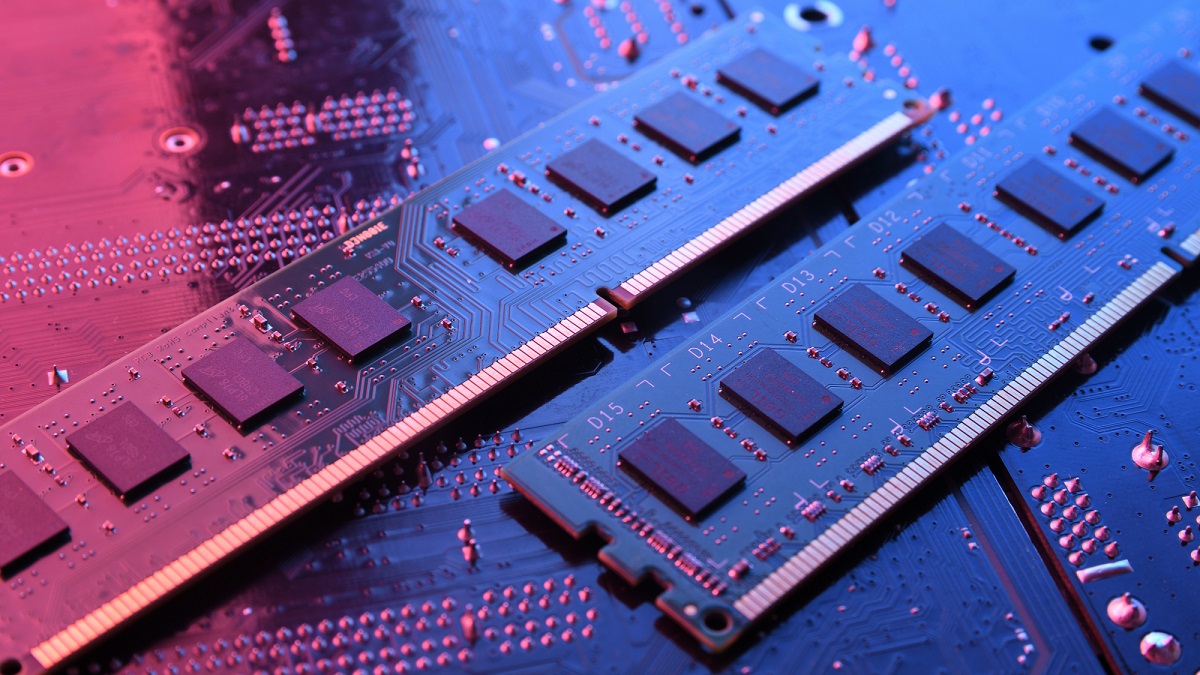Introduction
When it comes to maximizing the performance of your computer, one key component to consider is the amount of RAM it can hold. RAM, or Random Access Memory, plays a crucial role in the speed and efficiency of your computer’s operations. It allows your computer to access and retrieve data quickly, providing a smoother and more responsive user experience.
Understanding the maximum amount of RAM your computer can hold is important, as it determines the upper limit of how much memory you can upgrade to. This information can help you make informed decisions when it comes to upgrading your computer or purchasing a new one.
In this article, we will explore the factors that determine a computer’s RAM limit and provide useful tips on how to check your computer’s current RAM capacity. Whether you’re a tech-savvy enthusiast or just getting started, this article will help you navigate the world of computer memory.
Understanding RAM
Before diving into the factors that determine a computer’s RAM limit, it’s essential to have a basic understanding of what RAM is and how it functions.
RAM, or Random Access Memory, is a type of computer memory that allows data to be stored and accessed quickly by the computer’s processor. It serves as a temporary workspace where the computer holds data that is actively being used or processed. Unlike the permanent storage of your hard drive or SSD, RAM is volatile and only holds data while your computer is powered on.
Think of RAM as a desk space where you can spread out papers and documents to work on. The more desk space you have, the more resources you can access and work with simultaneously. Similarly, the more RAM your computer has, the more data it can hold in its temporary workspace, allowing for smoother multitasking and faster data retrieval.
RAM is crucial for running applications and processes on your computer. It allows the operating system, programs, and files to be loaded into memory, enabling the processor to access and process them quickly. Having an adequate amount of RAM ensures that your computer can handle resource-intensive tasks, such as running multiple applications, editing large files, or playing graphics-intensive games without lag or slowdowns.
It’s important to note that RAM capacity is separate from your computer’s storage capacity. While a larger hard drive or SSD allows you to store more files and data, it doesn’t directly impact the speed or performance of your computer. RAM, on the other hand, acts as a temporary storage space that directly affects the responsiveness and efficiency of your computer’s operations.
Now that we have a clearer understanding of what RAM is and its importance, let’s delve into the factors that determine a computer’s maximum RAM limit.
Factors that Determine a Computer’s RAM Limit
The maximum amount of RAM that a computer can hold depends on several factors. These factors vary from one computer to another and understanding them is crucial when considering a RAM upgrade. Let’s explore the main factors that determine a computer’s RAM limit:
1. Operating System Limitations
The operating system (OS) installed on your computer plays a significant role in determining the RAM limit. Older operating systems, such as Windows XP or 32-bit versions of Windows, have limitations that restrict the amount of RAM they can utilize effectively. For example, a 32-bit version of Windows can typically handle a maximum of 4GB of RAM. In contrast, 64-bit versions of modern operating systems, like Windows 10 or macOS, have much higher RAM limits, ranging from 128GB to even several terabytes.
2. Motherboard Limitations
The motherboard, which is the main circuit board of your computer, also sets a limit on how much RAM can be installed. Each motherboard has a specific RAM capacity it can support. This limit depends on the number of memory slots available and the maximum supported module size. Before upgrading your RAM, it’s important to check your motherboard specifications to determine the maximum amount of RAM it can handle.
3. Processor Limitations
Your computer’s processor, or CPU, can also play a role in determining the RAM limit. Processors have their own specific memory architecture and memory controller, which dictate the maximum amount and speed of RAM they can support. Before upgrading your RAM, it’s important to research the specifications of your processor to ensure compatibility and determine the optimal RAM configuration for your system.
4. 32-bit vs 64-bit Systems
As mentioned earlier, the difference between 32-bit and 64-bit operating systems affects the RAM limit. A 32-bit system can only access up to 4GB of RAM due to addressing limitations, while a 64-bit system can theoretically support much higher amounts of RAM. However, keep in mind that the actual RAM limit is also influenced by the operating system and other hardware factors mentioned above.
5. BIOS Limitations
The computer’s Basic Input/Output System (BIOS) also plays a role in determining the maximum RAM limit. BIOS versions can have limitations on how much RAM they can recognize and use. It’s essential to check for BIOS updates from your computer manufacturer to ensure that your system can support higher amounts of RAM.
Understanding these factors is essential in determining your computer’s maximum RAM limit. By considering these limitations, you can make informed decisions when upgrading your RAM and ensure compatibility with your existing hardware and software setup.
Operating System Limitations
The operating system installed on your computer plays a significant role in determining the maximum amount of RAM that your system can handle. Different operating systems have varying limitations when it comes to RAM capacity. It is important to understand these limitations when considering a RAM upgrade.
Older operating systems, such as Windows XP or 32-bit versions of Windows, have limitations that restrict the amount of RAM they can effectively utilize. For example, a 32-bit version of Windows can typically handle a maximum of 4GB of RAM. This is due to the inherent limitations of the 32-bit memory addressing scheme, which can only address 4GB of memory.
On the other hand, modern operating systems like Windows 10 or macOS, which are 64-bit, have much higher RAM limits. A 64-bit operating system can theoretically support extremely large amounts of RAM, ranging from 128GB to several terabytes, depending on the specific version and edition. However, it’s important to note that the actual RAM limit may vary based on the specific edition of the operating system and the hardware configuration of your computer.
To determine the RAM limit imposed by your operating system, you can check the specifications provided by the operating system’s developer or consult the documentation for your specific version and edition. It is also worth noting that some versions of operating systems, particularly those tailored for home or entry-level use, may have RAM limitations imposed to differentiate them from higher-end versions intended for professional or enterprise use.
When planning a RAM upgrade, it is crucial to ensure that your operating system supports the desired amount of RAM. If you are currently running a 32-bit version of an operating system, you may need to consider upgrading to a 64-bit version to take full advantage of larger RAM capacities.
In some cases, upgrading the operating system is not possible due to hardware limitations or compatibility issues. If you find yourself in this situation, you may need to consider alternative solutions, such as upgrading your computer’s motherboard or considering a new computer altogether. It’s always recommended to consult with a professional or check the system requirements of your specific operating system before making any significant hardware changes.
Understanding the limitations imposed by your operating system is a crucial step in determining the maximum RAM capacity for your computer. By considering the specific RAM limitations of your chosen operating system, you can make informed decisions when upgrading your computer’s memory and ensure optimal system performance.
Motherboard Limitations
The motherboard is a vital component in a computer system that connects various hardware components, including the CPU, memory modules, and expansion cards. It also plays a significant role in determining the maximum amount of RAM that your computer can support. Understanding the limitations imposed by your motherboard is crucial when considering a RAM upgrade.
Each motherboard comes with a specific RAM capacity it can support. This capacity depends on several factors, such as the number of memory slots available, the maximum supported module size, and the memory technology supported (e.g., DDR3 or DDR4). Generally, motherboards for desktop PCs have more memory slots than those for laptops, which allows for higher RAM capacities.
To determine the RAM limit of your motherboard, you can consult the manufacturer’s documentation or visit their website. The documentation typically includes details on the maximum supported RAM capacity range, the supported memory technology, and any specific requirements or recommendations regarding RAM module configurations.
It’s crucial to note that exceeding the motherboard’s RAM limit might result in compatibility issues or the computer failing to recognize the additional RAM. Therefore, it’s important to ensure that the RAM modules you intend to install are within the supported limits of your motherboard.
In some cases, upgrading the motherboard might be necessary to increase the maximum RAM capacity. However, this can be a more complex and expensive process, as it often involves replacing other components as well, such as the CPU and possibly the power supply. Upgrading the motherboard should be carefully considered, taking into account compatibility with other components and the associated costs.
It’s worth noting that some high-end desktop motherboards support advanced features, such as quad-channel memory architecture, which allows for even higher RAM capacities and improved memory bandwidth. These motherboards are typically found in workstation or gaming-oriented systems and may offer support for up to 128GB or more of RAM.
Ultimately, understanding the motherboard’s limitations in terms of RAM capacity is crucial when considering a RAM upgrade. By checking the documentation or specifications provided by the motherboard manufacturer, you can ensure compatibility and select RAM modules that meet the requirements of your specific motherboard, maximizing the performance of your computer while avoiding any potential compatibility issues.
Processor Limitations
The processor, also known as the CPU (Central Processing Unit), is the brain of the computer. It plays a crucial role in determining the overall performance and capabilities of the system, including the maximum amount of RAM that can be utilized. Understanding the limitations imposed by your processor is essential when considering a RAM upgrade.
Each processor has its own specific memory architecture and memory controller, which dictate the maximum amount and speed of RAM it can support. Processors are designed to work with specific types and configurations of memory modules, such as DDR3 or DDR4, and have a specified maximum memory capacity.
To determine the RAM limit of your processor, you can consult the specifications provided by the processor manufacturer or check the documentation for your specific model. The specifications typically include details on the supported memory types, maximum memory frequency, and the maximum supported RAM capacity.
It’s important to note that the RAM capacity supported by the processor may also be influenced by other factors, such as the motherboard and the operating system. For example, even if your processor supports a high RAM capacity, the motherboard or the operating system may impose limitations that result in a lower effective RAM capacity.
If you plan to upgrade your RAM, it’s crucial to ensure that the new RAM modules align with the specifications of your processor. This includes checking the supported memory types, maximum memory frequency, and the maximum supported RAM capacity. Using incompatible RAM modules may result in system instability or the computer failing to recognize the additional RAM.
It’s worth noting that some high-end processors, particularly those designed for professional workstations or enthusiast-level PCs, may support higher RAM capacities. These processors are often found in systems used for resource-intensive tasks like video editing, 3D rendering, or gaming. They may offer support for much larger RAM capacities, such as 128GB or even several hundred gigabytes.
If your processor has limitations that prevent it from supporting your desired RAM capacity, upgrading the processor may be necessary. However, this can be a more complex and expensive process, as it often involves replacing the entire CPU, which may require a compatible motherboard and potentially other components as well. Upgrading the processor should be carefully considered, taking into account compatibility, performance requirements, and budget constraints.
Understanding the limitations imposed by your processor in terms of RAM capacity is crucial when considering a RAM upgrade. By checking the specifications provided by the processor manufacturer, you can ensure compatibility and select RAM modules that meet the requirements of your specific processor, maximizing the performance of your computer system.
32-bit vs 64-bit Systems
One important factor that influences the maximum RAM capacity of a computer is whether it is running a 32-bit or 64-bit operating system. The main difference between these two types of systems lies in the way they handle memory addressing.
A 32-bit system can only address up to 4GB of memory directly. This limitation arises from the number of addressable memory locations provided by the 32-bit memory addressing scheme. However, it’s important to note that the actual usable RAM in a 32-bit system is often less than 4GB due to memory address space reserved for other hardware and system resources.
On the other hand, a 64-bit system has a significantly higher memory address space, theoretically capable of addressing up to 18.4 million terabytes of RAM. This allows for much larger RAM capacities to be utilized by the system. However, the actual RAM limit of a 64-bit system is also influenced by other factors such as the operating system, motherboard, and processor limitations.
To take full advantage of the increased memory address space offered by a 64-bit system, you need to install a 64-bit operating system. This will enable your computer to recognize and utilize RAM modules beyond the limitations of a 32-bit system. Most modern operating systems, such as Windows 10 and macOS, offer both 32-bit and 64-bit versions, allowing you to choose the appropriate version based on your hardware and requirements.
It’s important to note that upgrading from a 32-bit to a 64-bit operating system may not be as simple as installing a new version. It often requires a clean installation, which means backing up your data, reinstalling all your applications, and configuring your system settings from scratch. Additionally, it’s essential to ensure that your hardware, particularly the processor, is capable of running a 64-bit operating system. Not all processors support 64-bit architecture, so it’s important to check the specifications of your specific model.
When considering a RAM upgrade, it’s crucial to take into account whether your system is running a 32-bit or 64-bit operating system. If you are currently running a 32-bit system, your RAM capacity will be limited to around 4GB. To fully utilize larger RAM capacities, you will need to upgrade to a 64-bit system and ensure that all other hardware components, such as the motherboard and processor, support the desired RAM capacity.
It’s worth noting that some applications, particularly memory-intensive ones like video editing software or virtualization tools, may require a 64-bit system and larger RAM capacity to operate smoothly. By selecting the appropriate system architecture and RAM capacity, you can ensure optimal performance and responsiveness for your specific usage needs.
BIOS Limitations
The Basic Input/Output System (BIOS) of a computer is responsible for initializing and configuring hardware components during the boot process. It also plays a role in determining the maximum amount of RAM that a computer can support. Understanding the limitations imposed by the BIOS is crucial when considering a RAM upgrade.
The BIOS has a direct influence on how the computer recognizes and utilizes the RAM modules. Each BIOS version may have specific limitations on the maximum amount of RAM it can recognize and use. These limitations can vary depending on the manufacturer, make, and model of the computer or motherboard.
To determine the BIOS limitations on RAM capacity, you can consult the documentation provided by the computer or motherboard manufacturer. It may include information on the maximum supported RAM capacity, any restrictions on specific module sizes or configurations, and any recommended BIOS updates to unlock additional RAM capabilities.
It’s important to keep your BIOS up to date to ensure compatibility with newer RAM modules and potentially unlock higher RAM capacities. Manufacturers often release BIOS updates that address various issues, including increasing RAM support. Checking for BIOS updates from the manufacturer’s website or utilizing automatic update utilities provided by the manufacturer can ensure that you have the latest firmware with the most up-to-date features and capabilities.
In some cases, older systems may have a limited ability to recognize or properly utilize higher-capacity RAM modules. For example, the BIOS may not recognize modules with capacities above a certain limit or may cause stability issues when such modules are used. In such instances, it may not be possible to exceed the BIOS-imposed RAM limitations without a BIOS update or replacing the motherboard with a more recent model that provides increased RAM support.
When considering a RAM upgrade, it’s crucial to take into account any BIOS limitations that may affect the maximum supported RAM capacity. By checking the available documentation and ensuring that your BIOS is up to date, you can determine the RAM capacities your system can handle and make an informed decision when purchasing and installing RAM modules.
It’s worth noting that BIOS limitations are specific to each computer or motherboard model, and there is no one-size-fits-all solution. Therefore, it’s important to research and pay attention to the details provided by the manufacturer to ensure successful RAM upgrades and optimal system performance.
How to Check your Computer’s RAM Limit
Checking your computer’s RAM limit is a crucial step before considering a RAM upgrade. You can determine the maximum amount of RAM that your computer can handle by following these steps:
1. Check the operating system information:
Start by checking the basic information about your computer’s operating system. For Windows, you can right-click on the “This PC” or “Computer” icon on your desktop or in the File Explorer and select “Properties”. The window that opens will display information about your operating system, such as the version and system type (32-bit or 64-bit). For macOS, click on the Apple menu and select “About This Mac” to find the operating system information.
2. Determine if you have a 32-bit or 64-bit operating system:
Identify whether your operating system is running as a 32-bit or 64-bit version. This information is important because it directly affects the maximum amount of RAM your system can handle. A 32-bit system is limited to around 4GB of RAM, whereas a 64-bit system can support significantly higher capacities.
3. Check the system specifications:
To find more detailed information about your computer’s RAM limit, you can access the system specifications. In Windows, you can press the Windows key + Pause/Break key to open the System window. This window will display information about the processor, installed memory (RAM), and the system type. In macOS, you can again navigate to “About This Mac” and click on “System Report” to open the detailed system information. Look for the information regarding the current amount of installed RAM and the maximum supported RAM.
4. Consult the manufacturer’s documentation:
If you have a branded computer or a specific motherboard, you can check the manufacturer’s documentation for detailed information about the maximum supported RAM. The documentation will provide specific details about the RAM type, module configurations, and the maximum capacity the system can handle. You can find this documentation on the manufacturer’s website or by contacting their support directly.
5. Use third-party system information tools:
If you prefer a more automated approach, there are third-party system information tools that can provide a comprehensive overview of your computer’s hardware and specifications. Tools like CPU-Z, Speccy, or SIW can display detailed information about your system, including the maximum supported RAM capacity. These tools can be downloaded and installed from their respective websites, and they offer a user-friendly interface to view your computer’s specifications.
Gaining knowledge about your computer’s RAM limit is crucial in determining whether a RAM upgrade is possible and what capacity you can upgrade to. By following these steps and gathering the necessary information, you can make an informed decision when upgrading your computer’s memory, ensuring compatibility and optimizing performance.
Upgrading your Computer’s RAM
Upgrading your computer’s RAM can significantly enhance its performance and responsiveness, especially if you often engage in memory-intensive tasks such as gaming, video editing, or running virtual machines. To ensure a successful RAM upgrade, follow these steps:
1. Determine the compatible RAM type:
Identify the type of RAM that is compatible with your computer. Check the documentation provided by the motherboard or computer manufacturer, or visit their website to find the specific memory types and speeds supported by your system. Common RAM types include DDR4, DDR3, and DDR2. It is important to ensure that the RAM you purchase is compatible with your system’s memory slots and supported memory technology.
2. Check the maximum RAM capacity:
Refer to the information gathered in the previous section to determine the maximum RAM capacity that your computer can handle. This will help you decide how much RAM to purchase. Keep in mind that the maximum capacity may vary depending on factors such as the operating system, motherboard, and processor limitations.
3. Choose the appropriate RAM configuration:
Consider the current RAM configuration of your computer and whether you plan to replace the existing RAM modules or add additional ones. It is important to be aware of the optimal RAM configurations for your system, such as single channel, dual channel, or quad channel configurations. For best performance, it is recommended to install RAM modules in matched pairs or sets, especially if your motherboard supports dual channel or quad channel memory architectures.
4. Purchase the new RAM modules:
Shop for the RAM modules that meet your system’s requirements. Consider factors such as brand reputation, warranty, and customer reviews when selecting a reliable and reputable manufacturer. Ensure that the RAM modules you purchase are compatible with your computer’s specifications, including the type, speed, and capacity. Some computers may have limitations on the maximum RAM module size, so be sure to check that as well.
5. Install the new RAM modules:
Before installing the new RAM, make sure to shut down your computer and unplug it from the power source. Open the computer case or access the RAM slots, depending on your computer’s design. Carefully insert the RAM modules into the corresponding slots, applying gentle pressure until they are securely seated in place. Be mindful of any notches or guides on the RAM modules and make sure they align with the slots. Once the modules are properly installed, close the computer case and plug the power back in.
6. Test and verify the RAM upgrade:
After installing the new RAM modules, power on your computer and ensure that it recognizes the upgraded memory. You can check the system specifications or use diagnostic software to verify the new RAM capacity. Additionally, it is recommended to run a memory test utility, such as Memtest86, to check for any errors or issues with the RAM installation.
By following these steps, you can successfully upgrade your computer’s RAM, enhancing its performance and enabling it to handle more memory-intensive tasks. Upgrading the RAM is a relatively simple process, but if you are unfamiliar or uncomfortable with opening your computer or handling hardware components, it is advisable to seek assistance from a professional technician.
Conclusion
Understanding the maximum RAM capacity of your computer is essential for optimizing its performance and ensuring a smooth user experience. In this article, we have delved into the factors that determine a computer’s RAM limit and provided useful tips on how to check your computer’s current RAM capacity. Let’s recap the key points:
– Operating System Limitations: The operating system you use, particularly its version and architecture (32-bit or 64-bit), plays a significant role in determining the maximum amount of RAM your computer can handle. Upgrading to a 64-bit operating system can provide access to higher RAM capacities.
– Motherboard Limitations: Your computer’s motherboard dictates the maximum amount of RAM it can support. Checking the motherboard specifications, including the number of memory slots and the supported module size, is crucial before upgrading your RAM.
– Processor Limitations: The processor or CPU in your computer also affects the maximum RAM capacity. Each processor has its own memory architecture and memory controller, which determine the RAM limit. Checking the specifications of your processor will help you understand its RAM limitations.
– 32-bit vs 64-bit Systems: The type of operating system, whether it is 32-bit or 64-bit, influences the maximum RAM capacity. A 64-bit system offers higher memory addressing capabilities and can support larger RAM capacities compared to a 32-bit system.
– BIOS Limitations: The BIOS on your computer can impose restrictions on the maximum RAM capacity. Keeping your BIOS up to date and checking for any limitations or updates from the manufacturer is crucial when considering a RAM upgrade.
– Upgrading your Computer’s RAM: When upgrading your RAM, it’s important to determine the compatible RAM type, check the maximum RAM capacity, choose the appropriate RAM configuration, purchase the new RAM modules, install them correctly, and verify the upgrade using system information utilities and memory tests.
By understanding these factors and following the proper steps, you can make informed decisions when it comes to upgrading your computer’s RAM. A RAM upgrade can greatly improve your computer’s multitasking capabilities, overall performance, and ability to handle memory-intensive tasks. However, it’s important to ensure compatibility with the operating system, motherboard, and processor, as well as carefully follow installation procedures to avoid any compatibility issues or system instabilities.
If you have any doubts or concerns about upgrading your computer’s RAM, it is always recommended to seek guidance from a professional or consult the manufacturer’s support resources for your specific hardware configuration. With the right knowledge and steps, you can unlock the full potential of your computer’s performance by upgrading its RAM.







